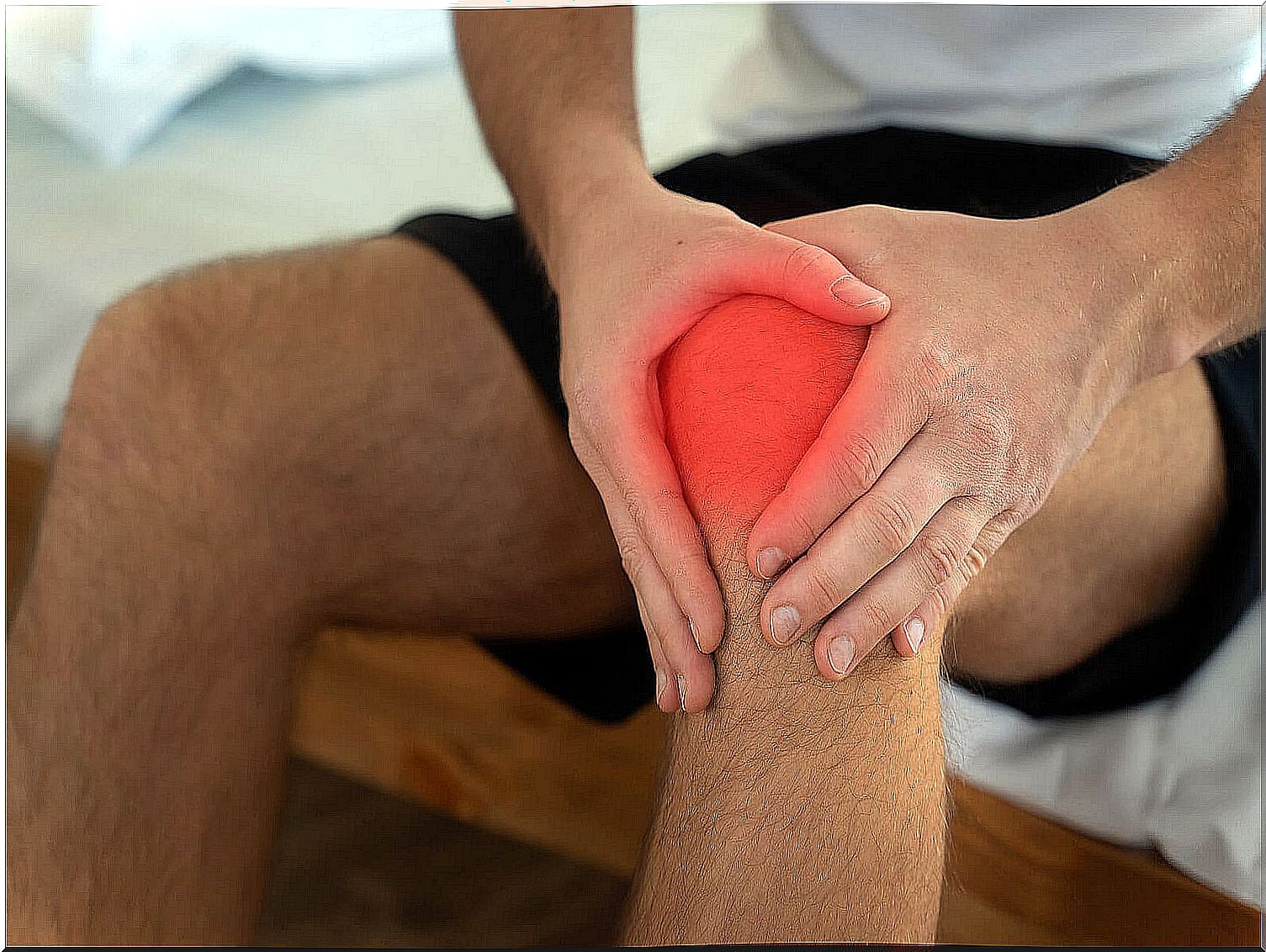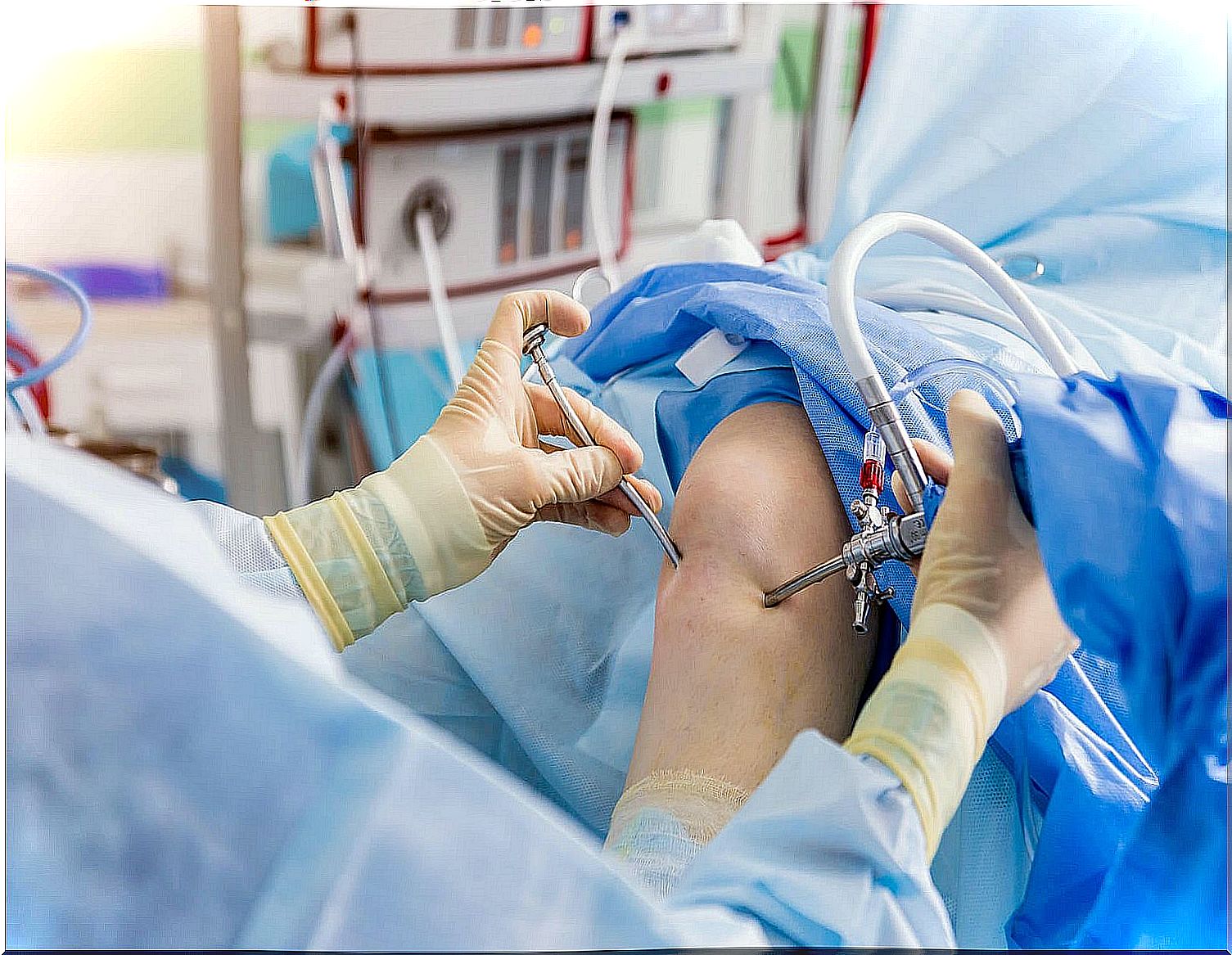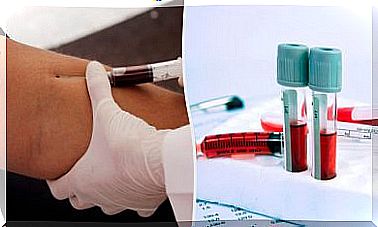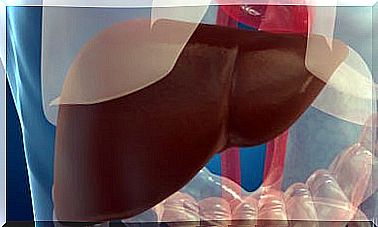What Is The Cause Of A Posterior Cruciate Ligament Injury?
The posterior cruciate ligament is the strongest in the knee joint. It is known as posterior because it passes through the back of the knee. It connects the tibia with the femur and together with the anterior cruciate, they maintain the stability of the area. They both intersect inside and form an X in the center of the joint.
Posterior cruciate ligament injuries occur less frequently than anterior cruciate injuries. The latter is considered the most vulnerable.
Usually there is less pain and instability, but the disability can last for several weeks or months. Here is more information.
Symptoms of posterior cruciate ligament injury
Most people with a posterior cruciate ligament injury experience immediate pain and swelling afterward. The sensation they describe is that the knee feels weak and limp , as if it will not support the person’s weight.
The pain can be severe and may be accompanied by difficulty walking, so there may be a limp. Although it is also important to note that the symptoms of a posterior cruciate ligament injury can be so mild that they may go unnoticed.
Over time, pain begins to appear or the knee begins to feel unstable. This is when the person seeks medical attention and discovers that they were injured long ago.
Degrees of injury
Posterior cruciate ligament injury is classified according to the size of the displacement of the bones in the knee joint. The degrees of injury are divided as follows:
- First degree or partial: it involves a backward displacement of the shin of 1 to 5 millimeters.
- Second degree or complete: in this case, the backward displacement of the shin is 6 to 10 millimeters.
- Third degree: the rearward displacement of the shin is greater than 10 millimeters of translation. With high frequency, it indicates that there is injury to the anterior and posterior cruciate ligament.

Main causes
Many knee injuries occur while playing sports. However, posterior cruciate ligament injuries are more common from a car accident. It occurs when you receive a blow just below the knee or when your weight falls on the flexed joint.
Other common mechanisms of injury to this ligament are the following:
- When the knee is hit backwards very quickly.
- The shin hits very hard against something firm, like the dash of the car.
- The knee is suddenly twisted or overextended.
How is a posterior cruciate ligament injury diagnosed?
For the initial assessment, your doctor will ask how you hurt yourself. You will then need to look at both knees to determine if one looks different from the other.
If the posterior cruciate ligament is injured, the knee will lean back in a non-anatomical way as the leg is straightened.
Another maneuver is to apply pressure to the shin with the knee bent at a 90-degree angle. If the tibia moves more than normal, the posterior cruciate ligament is most likely injured.
When the case requires it, the professional can request one or more of the following imaging studies:
- X-rays: Although it cannot be detected if there is damage to the ligament, it reveals fractures of the involved bones.
- Magnetic resonance imaging : using this technique, it is possible to observe if there is a tear of the posterior cruciate ligament and if the other soft tissues also present injuries.
- Arthroscopy: with this study, the inside of the knee joint is observed. A small video camera is inserted into it and the internal structures are analyzed.
Available Treatments for Posterior Cruciate Ligament Injury
Treatment depends on the degree of the injury and the time that has elapsed since it happened. It can be non-interventional or surgical.
Non surgical
In case of a minor injury, it is possible to start treatment with physical means. Cold therapy can be applied and the knee held up when sitting. An elastic bandage is also used to prevent swelling and limit movement.
Pain is relieved with over-the-counter pain relievers, such as ibuprofen or naproxen. These medications also help reduce swelling.
Surgical
Most people do not need surgery to repair a posterior cruciate ligament injury. It is more frequent that those who require it are athletes.
Posterior cruciate ligament repair is not about reattaching it. This joint does not heal well and can tear again.
For this reason, the doctor removes the injured ligament and replaces it with new tissue. This procedure is performed arthroscopically to speed up recovery. It also produces less scarring.

Recovery and future projection
Physical therapy through specific exercises can strengthen the leg muscles. In this way, it is intended to return a full range of motion to the knee joint.
After surgery, physical therapy should start 1 to 4 weeks later. It is possible that the duration of the same requires a period of 6 months for a complete improvement.
Injuries that involve more ligaments tend to recover more slowly. Most patients improve satisfactorily over time. Although it is a slow process, physical therapy is very important to be able to do all daily activities again.
Posterior cruciate ligament: fewer injuries, but careful
Once a posterior cruciate ligament injury has been diagnosed, a treatment plan is essential. The time involved in recovery will depend on the severity and the structures involved.
Some people may benefit from using crutches for a few days after surgery. An orthopedic bandage may also be recommended to prevent knee flexion.
Full recovery from a posterior cruciate ligament reconstruction takes up to a year. It is very important to emphasize that most people will be able to return to their activities as they did before the injury.









